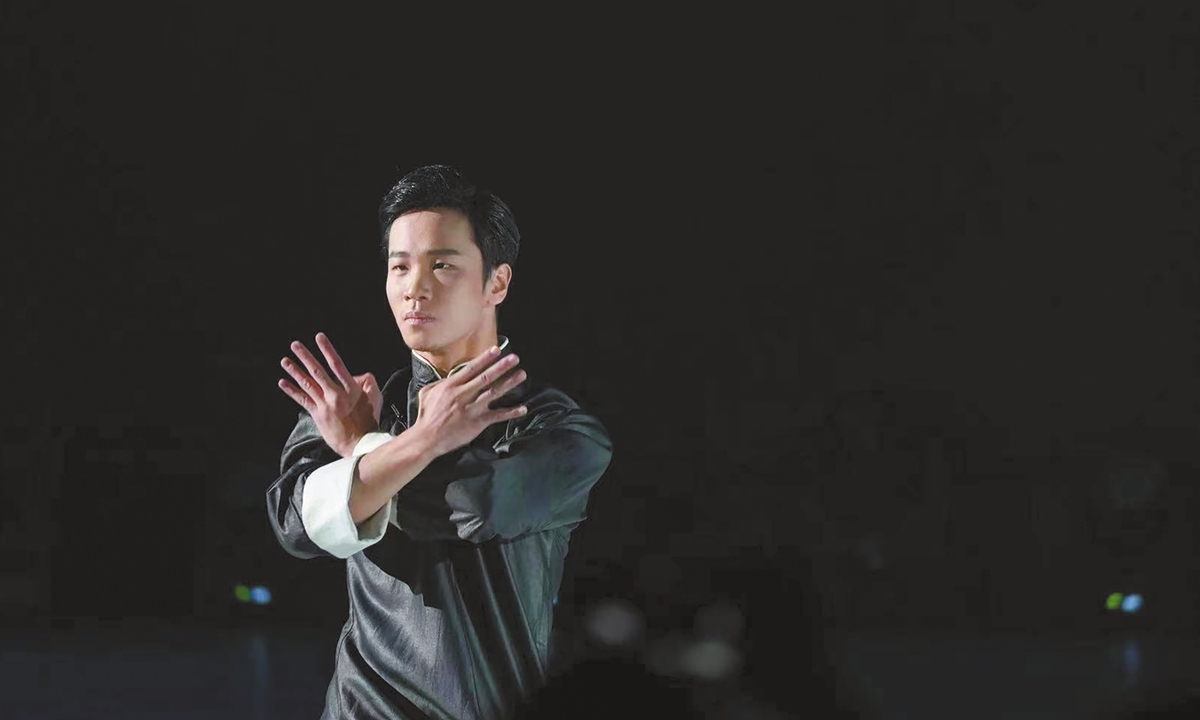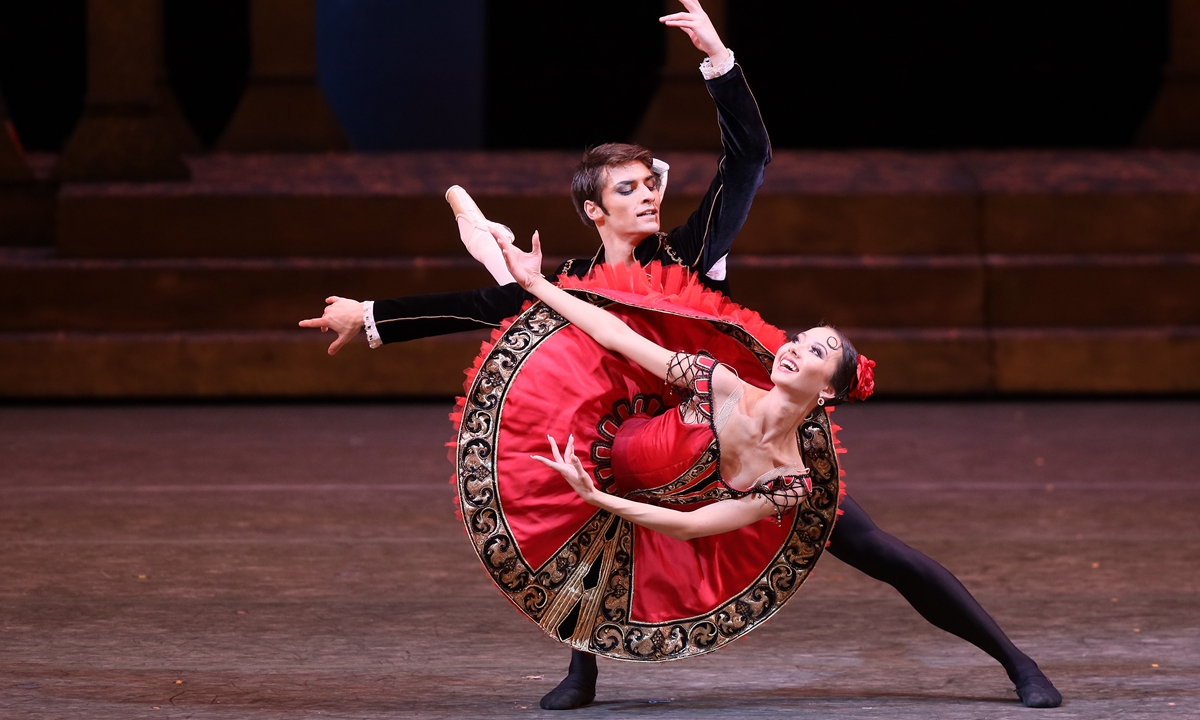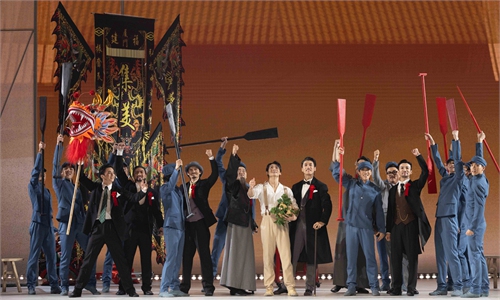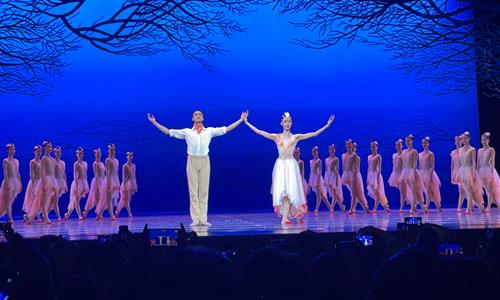ARTS / DANCE
Art of states brings audiences closer during China-Russia Years of Culture
When Wing Chun meets Ballet

Sayuri, a Beijing-based cultural critic specializing in ballet and dance drama, was glad to have secured a ticket for the performance brought by the Bolshoi Ballet Gala from Moscow at the National Centre for the Performing Arts (NCPA) in Beijing on Wednesday evening. This opportunity allowed her to enjoy a brilliant show and experience the Chinese audience's enthusiasm for ballet.
Just one week ago, thousands of miles away in St. Petersburg, Chinese dance drama Wing Chun, inspired by the traditional martial art of the same name, concluded its run at the prestigious Mariinsky Theatre. Russian audience Tatiana showed her excitement after watching the drama at Moscow's Bolshoi Theatre, saying that Wing Chun represents strength, courage and dialogue.
The two performances are both highlights of the ongoing China-Russia Years of Culture, which spans from 2024 to 2025, featuring over 230 events in 51 cities across China and 38 cities in Russia. Both sides have engaged in a dynamic series of cultural interactions as part of this designated cultural year. These include a variety of activities such as exhibitions, showcases of folk cultures, movie screenings, and artistic exchanges.
The applause and cheers coming from the theatre are a vivid footnote to the achievements of the China-Russia Years of Culture.
Resonance in theaters
Before the crew of the Shenzhen Opera and Dance Theater started its Russia tour, Li Chenzhe, one of the directors of the original dance drama Wing Chun, was not sure if the show would be understood by Russian audiences. However, Li was impressed by the long-lasting thunderous applause when they wrapped up the tour by early May.
"Since the start of the show, and by the time when we took our bows and returned to the stage, the entire 18 minutes, all I heard was passionate applause," Li recalled.
The show combining dance and martial arts became the first original Chinese dance drama staged at two of Russia's most prestigious theaters.
Using the universally recognized art form of dance, Wing Chun tells the true story of Master Ip Man, the grandmaster of Wing Chun and teacher of Bruce Lee, the legend in kung fu. The original dance drama takes two intangible cultural heritages - Wing Chun and Xiangyunsha, or Gambiered Canton Gauze - as its main topics.
The dance drama reached emotional resonance with Russian audiences, according to Li. In Russian audiences' eyes, the story narrated in the drama is a tribute to the heroism of ordinary people, with "Wing Chun kung fu" as its core artistic language.
"Together we [the crew and the Russia audience] celebrated peace and struggle through art," said Li.
In Beijing, the dancers from Russia and Chinese audiences have also built a "bridge" connecting their hearts through on-stage performances.
At the Opera House of the NCPA, the ballet gradually reached its climax when the selection of the classic Don Quixote started. As dancers spun and leapt on the stage, showcasing their superb dance skills, the Chinese audience responded with enthusiastic applause, loud cheers, and clapped along to the rhythm of the music. The lively atmosphere lasted for several minutes, impressing Sayuri.
For Sayuri and her friends, who are passionate about Russian ballet, this art form embodies the spiritual essence of the nation. "Through these dancers' dedication, I see their pursuit of true beauty in every performance and the resilient character of the nation," she told the Global Times.

The selection of the classic Don Quixote performed by Russian ballet dancers at NCPA Photo: Courtesy of Bolshoi Theater
Beyond the stage
The success of Wing Chun and the Bolshoi Ballet is a testament to the deep cultural resonance and universal appeal of art. On the surface, the two performances couldn't be more different - one rooted in the fluid, philosophical movements of Chinese martial arts and the other in the refined traditions of Western classical ballet. Yet, both art forms are detail-oriented, celebrate human movement, and deeply connected to their respective cultural identities.
The "cultural bridge" built by ballet and Wing Chun extends beyond the theater. Sayuri noted that some people around her have been trying to learn Russian in order to better understand the ballet, and more and more people are traveling to Russia to experience the charm of Russian culture conveyed through ballet.
On the other side, during the three workshops that included events at Lomonosov Moscow State University and with St. Petersburg Eifman Ballet, Li noticed that local audience members were imitating some Chinese kung fu moves after a close-up action demonstration such as Baguazhang.
These stage performances just one part of a much larger picture between China and Russia. The communication is not limited to the performing arts - its scope extends to exhibitions, film screenings, and more.
One of the standout exhibitions is Treasures of Dining from the Moscow Kremlin Museum Collection that provides Chinese audiences with a glimpse into Russia's rich history and traditions through the lens of food culture. On the cinematic front, collaborative films and TV series such as the 2025 film Red Silk and Guidui (lit: rejoin the unit) are telling stories that demonstrate the common values of the two peoples.
As a Russian audience told Zhang Junhe, one of the key roles in Chinese dance drama Poetic Dance: The Journey of a Legendary Landscape Painting that was also performed in Russia in 2024, although the Chinese and Russians don't speak the same language, the emotions conveyed by these cultural forms allow the two peoples to feel the common spiritual pursuits of mankind.




